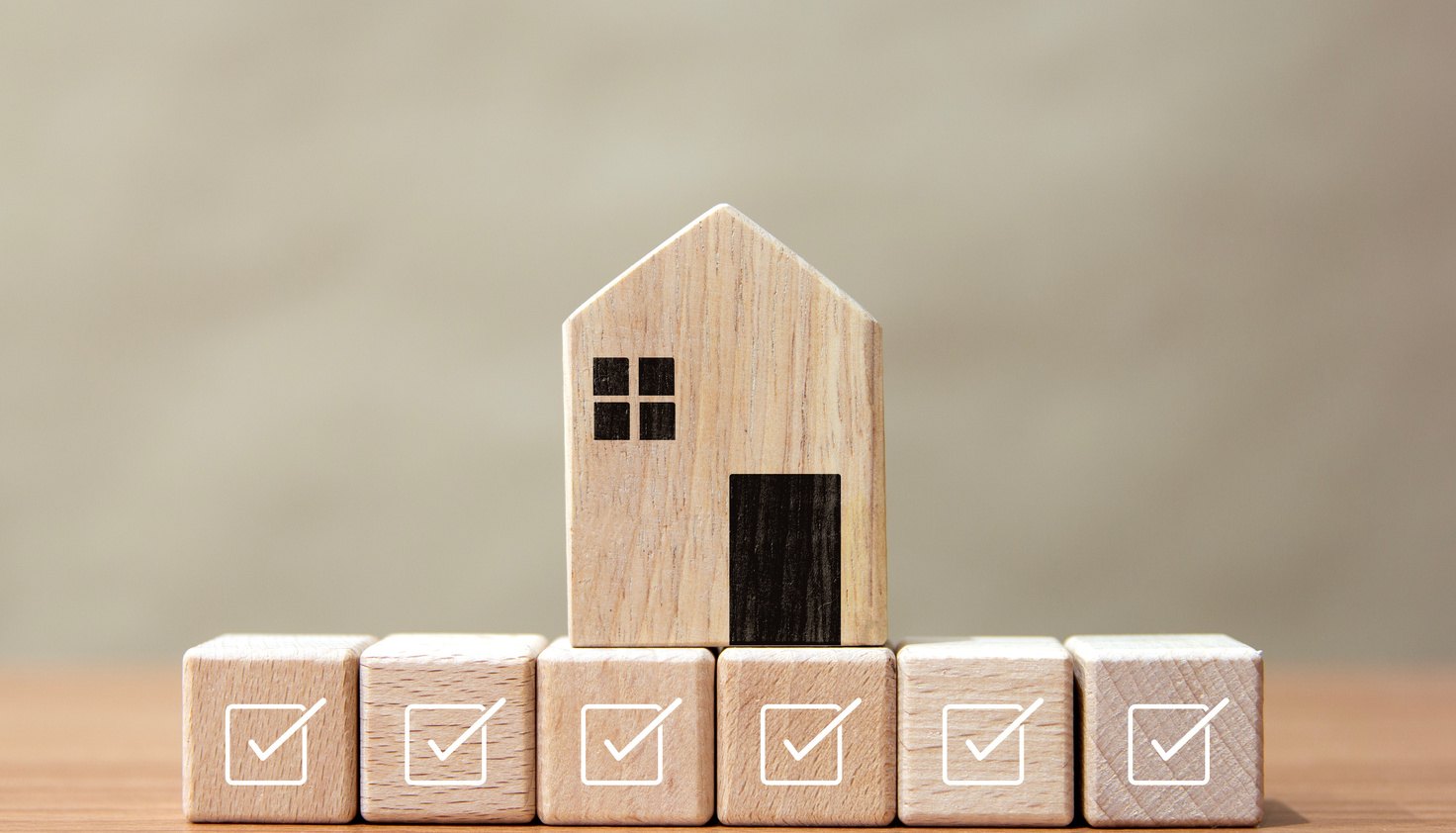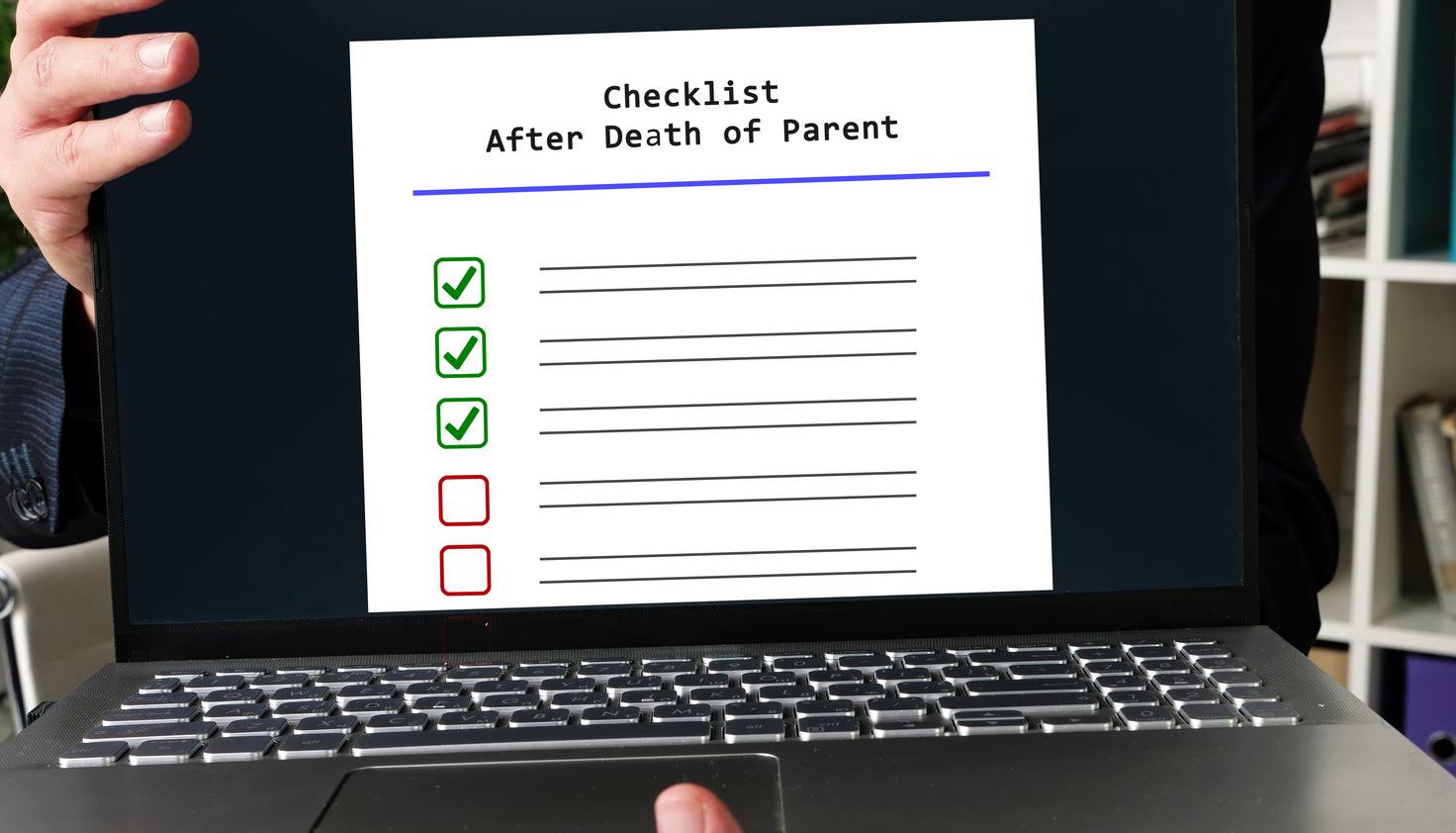The home selling process doesn’t always follow a straight line.
Sometimes there are obstacles that bring overwhelming stress and moments of uncertainty.
And it’s not uncommon for sellers to face pressure and unexpected financial trade-offs.
That’s especially true if you’re also buying a home, relocating, or dealing with a unique selling situation.
But the process becomes much easier to plan once you understand how it works.
This overview will help you do that by breaking down the home selling process, step-by-step.
You’ll also learn what to expect, how long it might take, and the key decisions you’ll need to make from start to finish.
What to know before selling your house
Every home seller wants to save time, money, and stress.
You’ll have a better chance of doing that if you’re aware of a few key factors before starting the process.
Here are three important things to consider before starting your home selling journey.
Your selling goals
Clarifying your top selling priorities will make the decision-making process a whole lot easier.
Are you trying to get the highest possible price?
Do you need to sell quickly?
Are you hoping to avoid repairs or staging your home?
Do you need a flexible closing date to match your next move?
Your answers will put you on the right path — from how you price the property to how you evaluate a buyer’s offer.
For example:
- If maximizing profit is the goal, you might invest in home improvements and hold out for the right buyer.
- If minimizing hassle matters more, you might skip the prep work and focus on cash buyers or as-is offers.
- If flexibility is key, you may prioritize buyers who can work around your timeline for closing.
You’re going to make a lot of decisions throughout the selling process.
Knowing what matters most will help point you in the right direction.
Seller expenses
Do you know what the biggest cost of selling a house is?
Real estate commission.
But that’s just one of several expenses to plan for.
Most seller costs fall into two categories: pre-listing expenses and closing costs.
Pre-listing expenses
These are typically paid out of pocket before your home goes live on the market.
The amount you spend depends on your home’s condition and your pricing strategy.
Common (and often optional) pre-listing costs include:
- Junk removal
- Deep cleaning
- Pre-sale home inspection
- Repairs or home improvements
- Home staging
- Landscaping or curb appeal updates
Closing costs
These are deducted from your sale proceeds at closing and may include:
- Escrow fees and title insurance
- County and city transfer taxes
- Unpaid property taxes through the closing date
- Notary or real estate attorney fees
- Real estate commission
Most closing costs are based on your home’s sale price and location.
You can use our home sale calculator to estimate your total costs based on your expected selling price.
Tax liabilities
Taxes can have a big impact on your net profit when selling a house — especially capital gains tax.
This tax applies to the increase in value between your original purchase price and your final sale price (known as your cost basis).
In most cases, your cost basis can be adjusted for certain closing costs and qualified home improvements.
The IRS offers a capital gains exclusion if the property is your primary residence and you meet the ownership and use test:
- You’re single and your gain is under $250,000.
- You’re married filing jointly and your gain is under $500,000.
This means many sellers don’t owe capital gains tax — especially if they’ve lived in the home for at least two of the past five years.
But every tax situation is different.
It’s always best to speak with a tax advisor to understand how the sale of your home could affect your return.
What matters when selling a home
What matters most when selling a house isn’t always obvious.
There are a few things that can shape your entire experience — and your final profit.
The three that carry the most weight?
Your asking price, a unique selling situation, and who sells your home.
The list price
Your asking price can impact your home sale more than anything else.
Price it too high, and it can grow stale and sit on the market.
Price it too low, and you risk leaving money on the table.
Your listing price becomes even more important if your goal is to sell quickly.
The key is setting a number that reflects fair market value — one that attracts serious buyers while protecting your profit.
Unique selling situations
Some sellers face circumstances that require a different approach.
Here are a few of the most common:
Selling an inherited home
Selling an inherited property adds more logistics to the typical home sale.
The seller has to deal with things like the potential of probate court, unique tax scenarios, and additional legal steps.
They also have to manage relationships if there are multiple heirs involved.
An experienced real estate agent and attorney are often part of the equation in these situations.
Both can help simplify the process and avoid stressful delays.
Selling during a divorce
Even amicable separations can complicate the sale of a home.
Emotions can run high, and financial decisions may become contentious.
That’s why selling a house during a divorce requires extra care, a clear plan, and steady communication.
It’s a situation where staying objective and aligned can make all the difference.
Selling a rental
Selling a rental property comes with unique considerations — like tenant notice requirements, property condition, and potential capital gains tax.
Landlords may need to coordinate move-outs, make repairs, and plan around their investment goals to avoid costly delays.
Who sells your property
The person responsible for listing your home — whether it’s a real estate agent or you as a for sale by owner (FSBO) — plays a major role in how the process unfolds.
A skilled listing agent can help you with pricing, marketing, negotiations, and closing.
But the wrong agent (or trying to go at it alone) can shrink your profit and make the selling process unpredictable.
So if you hire a professional, knowing how to choose the right Realtor matters –– a lot.
The typical home selling process timeline
No two home sales follow the exact same timeline.
Some homes get offers within days.
Others sit on the market for weeks — or even months.
That said, most sales follow a similar sequence from start to finish.
Here’s a general timeline of the home selling process to give you a sense of what to expect:
- 1 to 4 weeks: Preparing to sell — including repairs, decluttering, deep cleaning, staging, and professional photography
- 1 day to 60+ days: Time on market –– depending on your list price and the demand for and condition of your home
- 30 to 60 days: Escrow period after accepting an offer — includes inspections, home appraisal, loan underwriting, buyer contingencies, and closing paperwork
The full process typically takes two to four months, depending on your local real estate market and personal selling goals.
Several key factors can speed up or slow down the process:
- Market conditions: Homes sell faster in a seller’s market with limited inventory.
- Pricing strategy: Properties that are competitively priced attract offers more quickly.
- Home condition: A clean and move-in-ready home tends to sell faster and with fewer buyer objections.
If you want a deeper breakdown, you can learn more by reading our article on how long it takes to sell a house.
How the home selling process works
Selling a home comes with a lot of moving parts — but the overall process tends to follow a familiar path.
Whether you’re preparing for your first sale or you’ve done this before, it helps to know what each stage involves.
Here’s a high-level look at how the home selling process typically unfolds:
Prepare to sell your home
Preparing to sell your home is one of the most important stages of the process.
This is when you decide what needs to be done before buyers see the property.
And that goes beyond just sprucing things up.
What you actually do — and when — depends on your goals, timeline, and how you plan to sell.
Many sellers start by narrowing down their ideal move-out date so they can work backward and stay on track.
Common tasks during this phase might include:
- Decluttering
- Deep cleaning
- Minor repairs
- Light cosmetic updates.
Some sellers also choose to get a pre-listing inspection to flag potential issues before a buyer does.
And staging the home is another option before bringing in a professional photographer.
Staging is sometimes covered by the listing agent — but not always.
There’s no one-size-fits-all approach here.
The right level of prep depends on your priorities, budget, and how quickly you need to sell.
For a step-by-step breakdown, check out our guide on getting your house ready to sell.
Choose your selling path
There’s more than one way to sell a house.
You might…
- List on the open market with a real estate agent
- Sell it yourself as a for sale by owner (FSBO)
- Or go off-market with a cash buyer or iBuyer.
Selling with an agent often means more prep and coordination — but it can also result in a higher sale price.
Cash buyers and iBuyers typically offer speed and convenience but pay less than market value.
Each option has its pros and cons.
Which path makes the most sense comes down to what you’re prioritizing.
Speed, profit, or control.
Set your pricing strategy
One of the most important decisions you’ll face is how much to list your home for.
But this isn’t just about picking a number.
It’s about positioning your home strategically in your local housing market.
Many sellers turn to a real estate agent for pricing guidance, often through a comparative market analysis (CMA).
Others review recent sales or use online valuation tools to get a general sense of what similar homes are going for.
Whichever route you take, your pricing strategy is critical.
Why?
Because your list price sets the tone for how buyers perceive your home — and how quickly they’re likely to act.
Put your home on the market
Once you’ve set your asking price, it’s time to make your home available to buyers.
If you’re listing on the open market, this typically means:
- Uploading your listing to the Multiple Listing Service (MLS)
- Publishing it on home search platforms
- Coordinating showings and open houses with your agent.
If you’re selling off-market — for example, to a cash buyer or iBuyer — you may skip traditional marketing altogether.
Either way, this is the point where your home becomes visible to prospective buyers and open for offers.
Review and accept an offer
Buyers can submit offers once your home is on the market.
And as the seller, you have three ways to respond:
- Accept
- Decline
- Make a counteroffer.
Some offers are strong right out of the gate and easy to accept.
Others lead to a few rounds of negotiation before both sides agree on the final price and terms.
Common negotiation points include:
- The sale price
- Contingencies
- The closing date.
The home is typically taken off the market once both parties sign the purchase agreement.
Enter escrow
Escrow is the period between accepting an offer and closing the sale.
It’s managed by an escrow officer — a neutral third party who ensures all terms of the purchase agreement are met before money and the property officially changes hands.
The escrow company holds the buyer’s earnest money deposit and coordinates the exchange of documents and funds between both sides.
One of the first steps in this phase is the buyer submitting their “good faith” deposit.
This is typically 1% to 3% of the sale price and due within 1 to 3 days of offer acceptance, as outlined in the contract.
A title company is also involved in this stage of the process.
They verify legal ownership, run a title search to check for any issues, and issue title insurance to protect both the buyer and their lender.
Buyer inspections, appraisal, and loan approval
Many real estate transactions include a due diligence period after entering escrow.
During this time, the buyer may schedule a home inspection — or other inspections — depending on what’s outlined in the purchase contract.
These are optional and can be waived if the offer isn’t contingent on them.
If the buyer is financing the purchase, their lender will order a home appraisal and begin the loan underwriting process.
Both steps are required to move the mortgage toward final approval and keep the transaction on track.
Resolve buyer contingencies
It’s common for a real estate transaction to include contingencies from the buyer.
But this is the point when those conditions need to be resolved for the sale to proceed.
Common real estate contingencies include:
- The inspection (or due diligence)
- Appraisal
- Loan approval.
And — in some cases — the sale can be contingent on the final sale of the buyer’s current home.
Each contingency has a deadline outlined in the purchase agreement.
To move forward, the buyer must remove the contingency in writing on a contingency release form.
Why does this matter?
Because every contingency gives the buyer a built-in exit from the deal without losing their earnest money deposit.
This is why getting all contingencies released is often the biggest hurdle for a seller.
Once they’re officially removed, the sale is much more likely to close.
Close the sale
The final stage of selling a home is closing the transaction.
Most of the work in the house closing process happens in the days leading up to the official closing date.
This is when documents are signed, funds are transferred, and ownership officially changes hands.
In the days leading up to closing, the buyer will:
- Conduct a final walkthrough of the property
- Sign their loan documents
- Wire the remaining funds to escrow.
The escrow company manages the final paperwork and disburses funds to all appropriate parties.
They also handle the payoff of any outstanding loans if you’re selling a house with a mortgage.
As the seller, you’ll sign your closing documents with a notary and hand over anything that stays with the home — like keys and garage remotes.
Once everything is finalized, the county recorder’s office records the deed, and ownership officially transfers to the buyer.
Mistakes to avoid during the selling process
Even experienced homeowners can run into a few bumps when selling a house.
While plenty of home selling tips focus on what to do, it’s just as important to know what not to do.
Here are three common mistakes that can throw off your timeline or diminish your profit — and how to avoid them.
Overlooking buyer contingencies
The contingencies in a buyer’s offer can disrupt the entire selling process.
Some sellers get too caught up in the offer price and overlook the terms.
But those details can be costly to ignore.
These conditions give buyers the option to walk away if certain requirements aren’t met.
That might include a low appraisal, unexpected inspection findings, or financing that doesn’t get final approval.
Skipping over these stipulations is one of the most common reasons a home falls out of escrow.
That’s why it’s worth taking time to understand every condition before you accept a contingent offer.
Because if you don’t?
Your home could go back on the market — and sell for less than it should.
Skipping important repairs
Selling a house as-is can work — but it often limits your pool of serious buyers.
Many expect a home that feels move-in ready and may hesitate if the property looks neglected or worn.
That doesn’t mean you need to renovate every room.
But visible flaws — like scuffed walls, loose cabinet handles, outdated fixtures, or worn flooring — can shape a buyer’s first impression.
And that impression can influence how they perceive your home’s overall value.
Minor repairs and low-cost upgrades often offer the highest return.
That’s especially true when they improve how well-kept your home looks.
Even small changes can make the property feel more move-in ready.
And that can translate to more interest and stronger offers.
Not viewing your home sale as a business transaction
Emotions often run high when selling a home.
But it’s best to approach things like a business deal once your house hits the market.
Lowball offers, picky buyers, and last-minute negotiations aren’t personal.
They’re just part of the process.
And buyers aren’t emotionally invested in your favorite paint color or custom upgrades — they’re envisioning their own space.
Let logic lead the way.
Keeping your emotions in check will help you move faster and walk away with more money.
Conclusion
The home selling process doesn’t always go exactly as planned — and that’s okay.
Each stage comes with its own set of decisions, deadlines, and potential curveballs.
But it’s a lot easier to stay in control when you know what to expect.
And with a clear plan, you can make smart moves and keep your goals front and center.
If you’re ready to take action, our step-by-step guide to selling a house walks you through exactly how to do it.





